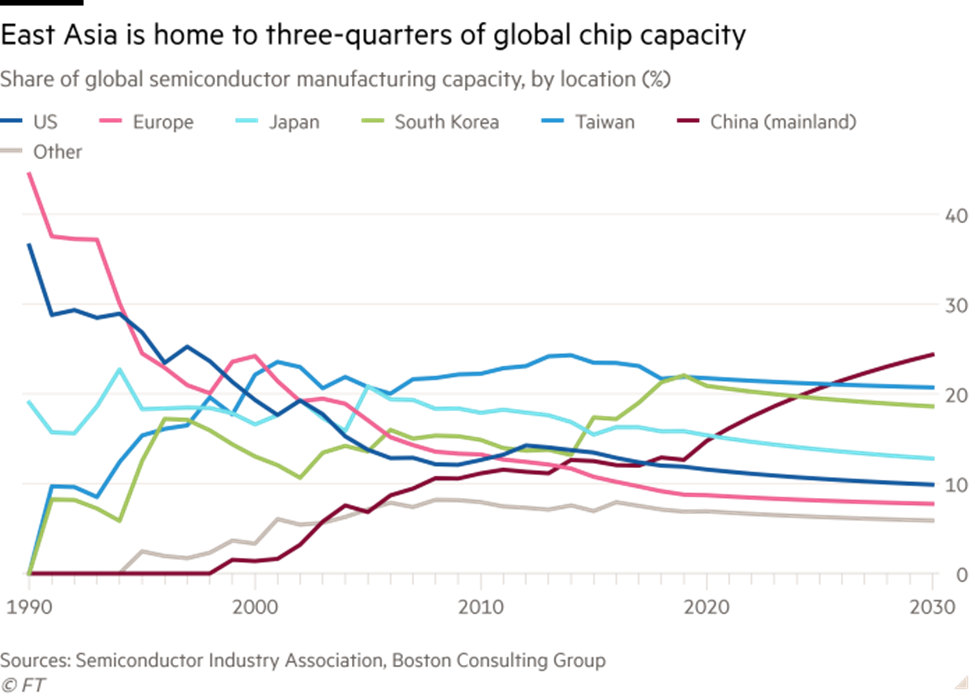Last week, General Motors reported strong earnings. It could have been an even stronger quarter.
The company announced a net income of $3 billion, about 10 times more than it made in the same quarter a year ago. GM could have had a better quarter, but “revenue and vehicle sales fell slightly from a year ago because the global chip shortage and plant closings limited supply of vehicles. International sales also dropped.”
That shortage is expected to cost the company up to $2 billion in earnings this year.
While some analysts believe the chip shortage is because electronics makers are buying more chips, that’s only part of the story.
Another reason for the shortage is the fact that automakers canceled orders last year. When plants shut down during the pandemic, automakers reduced costs by delaying orders. That turned out to be a mistake when other companies were eager to accept the chips.
The shortage is also due to a decline in capacity in the U.S. and Europe.
According to the Financial Times: “The U.S.’s share of global semiconductor manufacturing capacity fell from 37% in 1990 to just 12% last year, while Europe saw a 35 percentage point decline in the period, to 9%. China’s mainland expanded its share from almost nothing to 15%, a figure that is expected to rise to 24% in the next decade.”
U.S. Manufacturing Decline Contributed to Chip Shortage

Source: Financial Times.
Chip Shortage Reveals Supply Chain Weaknesses
The chip shortage is just one supply chain bottleneck. But the reason for the shortage is a series of decisions that created a reliance on just a few manufacturers.
Automakers are losing sales because of decisions they made last year. Production shortfalls exist because of decisions made 30 years ago.
When thinking of the implications of supply chain shortages, it’s important to remember that it took decades to reach this point. It will take decades to recover.
While I didn’t exactly design the internet, I can take full credit for this.
I’ve created a first-of-its-kind innovation in the financial markets. It allows everyday traders to get ahead making one simple trade per week.
Click here to see how it works.
Michael Carr is a Chartered Market Technician for Banyan Hill Publishing and the Editor of One Trade, Peak Velocity Trader and Precision Profits. He teaches technical analysis and quantitative technical analysis at the New York Institute of Finance. Mr. Carr is also the former editor of the CMT Association newsletter, Technically Speaking.
Follow him on Twitter @MichaelCarrGuru.




